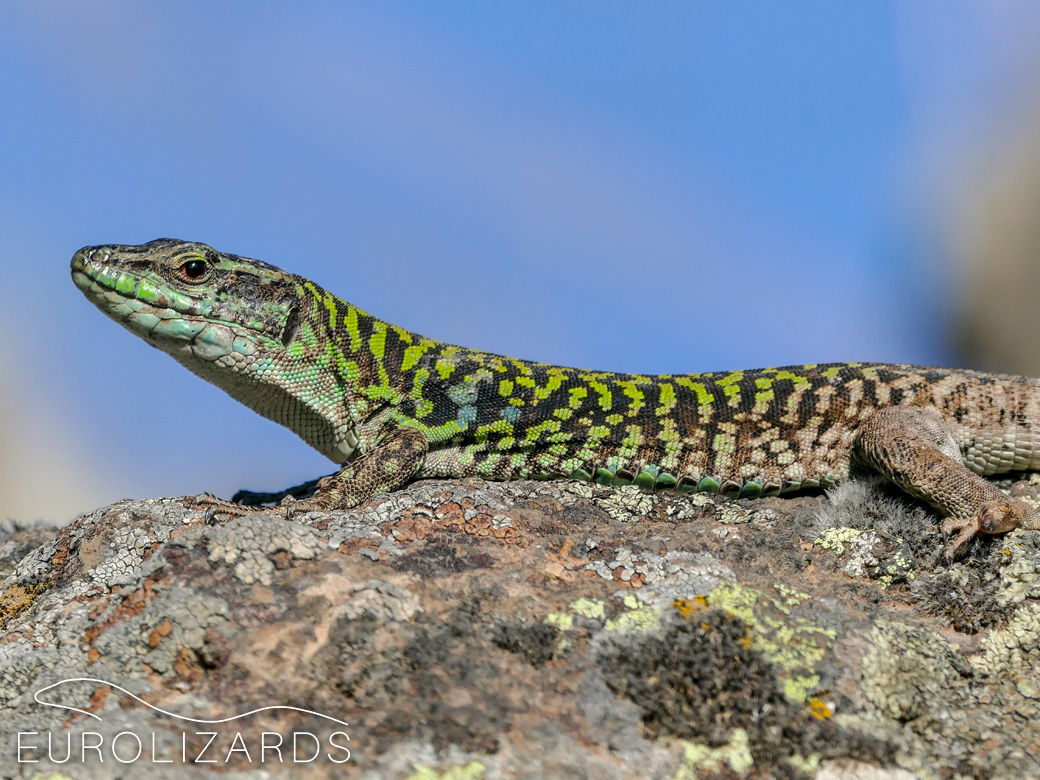Podarcis siculus - Italian Wall Lizard

Another Italian success story: As the Common Wall Lizard, the Italian Wall Lizard is an adaptive and invasive Lacertid. It has spread along the Adriatic Coast, the Thyrrenian Islands, Menorca and northern Turkey and has been introduced to several other locations. In some areas this has turned out to be problematic for the native Lacertid fauna: In Croatia, Podarcis siculus seems to increasingly replace the local Podarcis melisellensis in some areas; on the Aeolian Islands, the endemic Podarcis raffonei has been almost entirely wiped-out by the introduced Podarcis siculus.
It's a robust and big Wall Lizard with greenish backs in spring and light - in some populations orange or blue - unspotted undersides. Like Podarcis muralis, it doesn't depend on rocks but has populated a wide range of habitats including sandy beach areas.
The nominate subspecies can be found in Southern Italy, Sicily and Sardinia, Turkey and numerous Mediterranean Islands. It may be confused with Podarcis tiliguerta on Sardinia or with Podarcis waglerianus on Sicily. However, in Podarcis siculus, the green colouration of the back ends at the hind legs whereas in Podarcis tiliguerta and Podarcis waglerianus it is continued at least to the front part of the tail. Furthermore, Podarcis siculus is considerably bigger than the mentioned species. Generally, Podarcis siculus can be frequently observed within villages and even big cities whereas Podarcis waglerianus seems to avoid human settlements.
Podarcis muralis nigriventris differs from Podarcis siculus by its distinct dark pattern, Podarcis muralis breviceps shows no green colours on the back. The (almost extinct) population of Podarcis raffonei on Vulcano Island has dark spots on the throats whereas Podarcis siculus has unspotted throats.
Subspecies campestris can be found on the remaining Italian mainland, the Adriatic coast (and other places where it has been introduced, e.g. Corsica or Athens). This subspecies shows a characteristic dark vertebral stripe. However, there seem to be plenty of transition forms between this and the nominate subspecies.
Subspecies campestris may be confused with Podarcis melisellensis. The latter one is smaller with a shorter head, blunt snout
and frequently a more delicate dark pattern on the flanks. In central and northern Italy, subspecies campestris can be distinguished from Podarcis muralis maculiventris / nigriventris by its unmarked throat and underside.
Furthermore, separate subspecies have been described for several Italian island populations although it is questionable if these are valid. Anyhow, some of these populations show impressive colour morphs.

In 2019, for the Western Pontine Islands (Italy) a seperate species - Podarcis latastei - has been described. The lizards from these islands differ genetically from Podarcis siculus on adjoining Italian mainland. However, the validity of the new taxon is still under discussion.







EUROLIZARDS - The Home of European Lizards! © Birgit & Peter Oefinger
